What would you do with $200?
For some of us, $200 can be used for a night out, to buy that outfit you’re eyeing or that new gadget on your shopping list.
But for migrant workers, $200 makes up about slightly less than a fifth of their average monthly pay.
It is not often easy to calculate how much a migrant worker is paid, because even though the government has set guidelines on hiring foreign workers, there is no official minimum wage for construction workers in Singapore.
Employers are often tight-lipped on this too, and workers themselves are sometimes reluctant to share. Nevertheless, we know that most construction workers send back a large proportion of their pay home to their families.
Understanding migrant workers
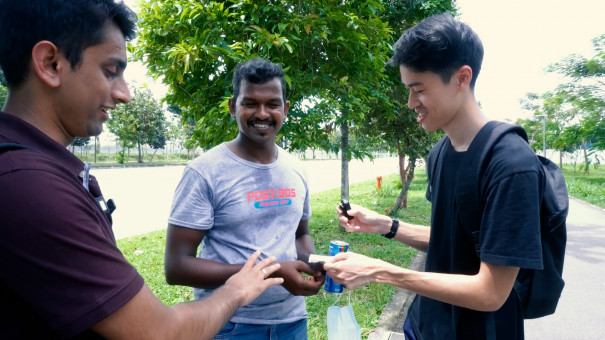
Kevin Wee, 27, knows this, because he recently went on a walk through his neighbourhood to talk to migrant workers in the area, to find out more about their lives and to appreciate them for their work.
He says: “I live high enough to overlook a construction site. One day, looking at the sprawling site, it dawned on me how much labour is required to build something from scratch. I also noticed that after sunset, there would still be workers roaming around doing various tasks.”
So the founder of social enterprise Rebound with Resilience decided to do something for them and even filmed the outing, in the hopes of getting Singaporeans to understand migrant workers and their lives here.
Explains Kevin: “Recently, there has also been news about dormitory living conditions and accidents involving migrant workers.”
In the most recent news, a Bangladeshi worker died after falling 20m from the roof of a West Coast condominium.
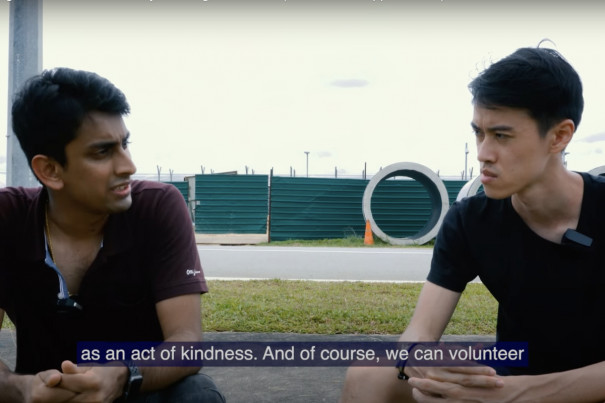
In the video, Kevin was accompanied by a friend, Senthil, 23, who helped as a translator as well as shared some insights into migrant workers’ lives in Singapore.
Senthil had previously helped run a construction company for 30 workers and says that most are willing to work long hours to send money home to their families.
They would work 10 to 12 hours a day, five or six days a week, including public holidays if project deadlines were tight, he explains.
Other stories you might like




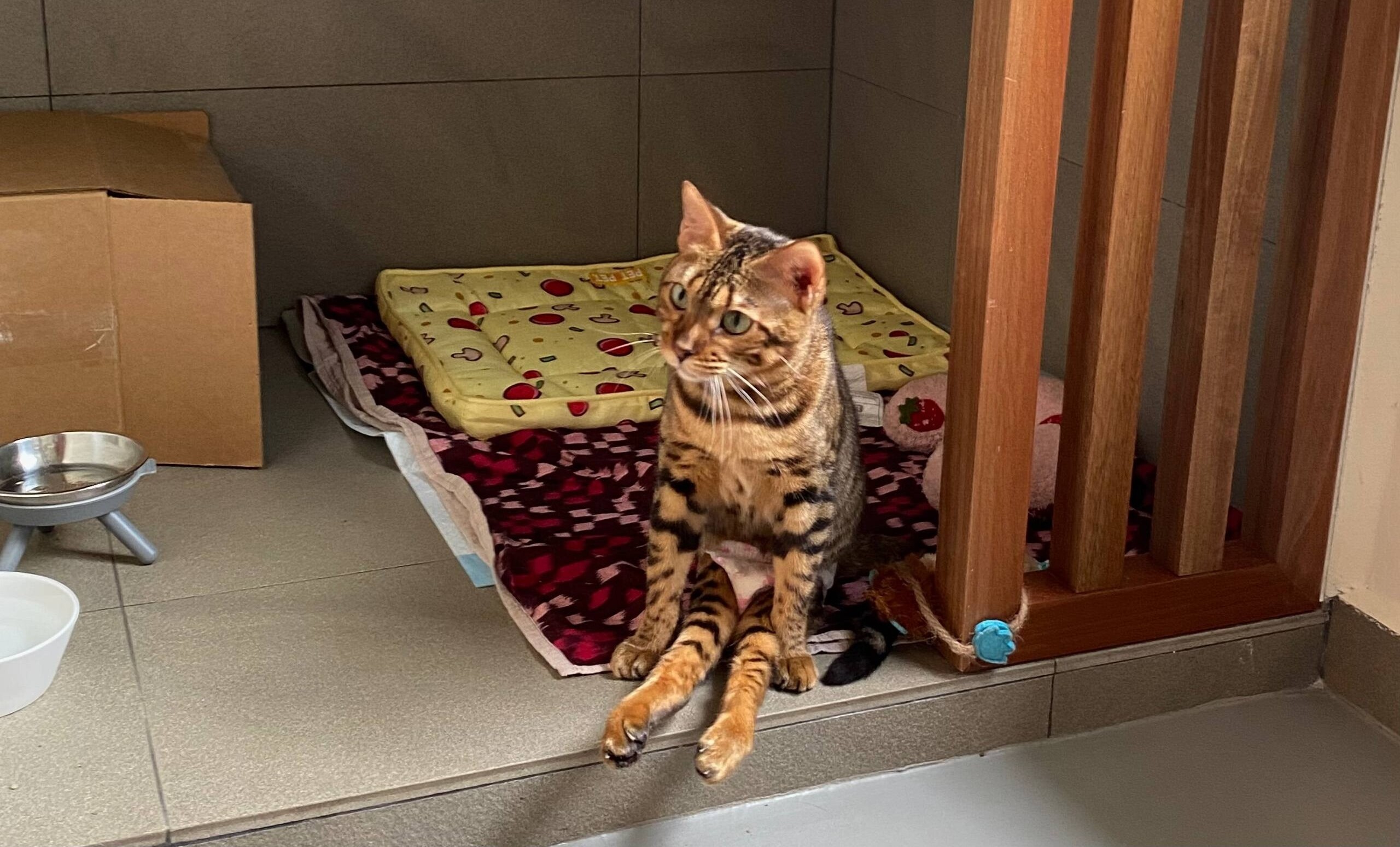


Workers have to deal with harsh working conditions, environments polluted with dust and onsite contaminants, as well as poor living conditions.
Despite working long hours under punishing conditions far from home, one thing keeps them going: Providing a brighter future for their families.
Says Senthil: “In terms of Singaporean pay, their salary is definitely low, but family is their major driving force so they are happy hustling even for that $1,000.”
Why give money?
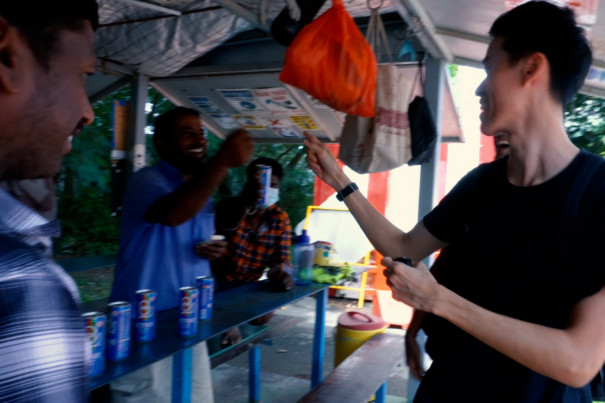
In the video, Kevin stops to interact with migrant workers and offers them drinks, and after a short chat, gives them $100 in cash, leaving them slightly confused but happy.
But isn’t it a little gimmicky to post a video online highlighting that you’re giving money to migrant workers?
When asked that question, Kevin admits that he did do it for the views: “Truth be told, as a creator, you hope for your video to be picked up. Hence, giving a sizable sum of money is more ‘clickbaity’, for the lack of a better word.
Regardless, he still decided to go ahead with the plan, because he believed that money was the easiest and most tangible way of appreciating the efforts of the migrant workers.
He says: “I went in slightly fearful and not knowing what to expect, but I came out feeling so grateful and loved. As seen in the video, their unconditional compassion to me (when I pretended I had no money), and the gratitude they expressed to me and Singapore after, made me quite emotional.”
Since it was posted on 14 May, the video has received 559 views on YouTube and 76,400 views across 4 videos on TikTok.
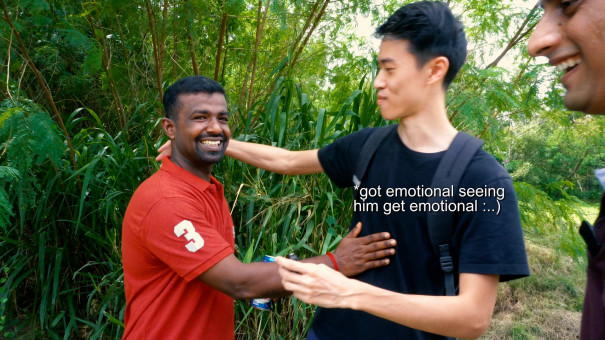
But Kevin hopes also that people would see the heart behind the video.
“I believe people will also be able to see the love and connection we (the migrant workers and Kevin) shared, which made this video special for me. And I hope it inspires others to give in their own way.”
“Money is just a medium of exchange; the underlying principle is to be kind. As long as it’s done in love and with the right intentions, any form of giving will be appreciated by them!”
Kevin says that in his conversations with them off camera, most of the workers didn’t talk much about their struggles, opting rather to talk about the positives of working in Singapore.
He says: “Surprisingly, many of them tried not to talk about their challenges much. Their resiliency and stoicism is plain to see. I suspect they all accept it as a norm, and avoid complaining because it may affect their attitude.”
“Most said that they will send the money back home. They live simple lives here and spend very little. Their families are their priority.
Things are looking up
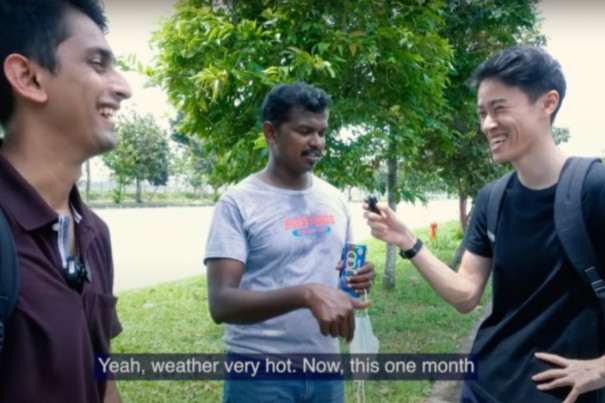
Over the past few years, there have been many incidents surrounding migrant workers from accidents on the roads to deaths on construction sites. But Senthil explains that measures are being taken to prevent such incidents from reoccurring.
“If there’s a near-miss incident within the site or surrounding sites, then the information will be used to brief workers during their toolbox meeting (which happens at the start of each workday),” shares Senthil.
The curriculum is revised periodically, within a year or a few months, with different safety protocols at different levels such as safety coordinators and safety officers.
Aside from the improvements in workplace safety, the treatment of workers has also improved, with the general public becoming more empathetic, welcoming and kind to workers.
How can I help?
Providing support for migrant workers does not have to be in the form of money but can be in time.
You can volunteer at non–profits or social enterprises such as Migrant x Me, Migrant Mutual Aid, TWC2 and CMSC. All these organisations advocate and care for migrant workers welfare in Singapore.
You don’t even have to work with an organisation. In our day-to-day lives, you can show kindness to migrant workers around you with a wave or a smile, or even a cold drink in our hot weather!
Other stories you might like





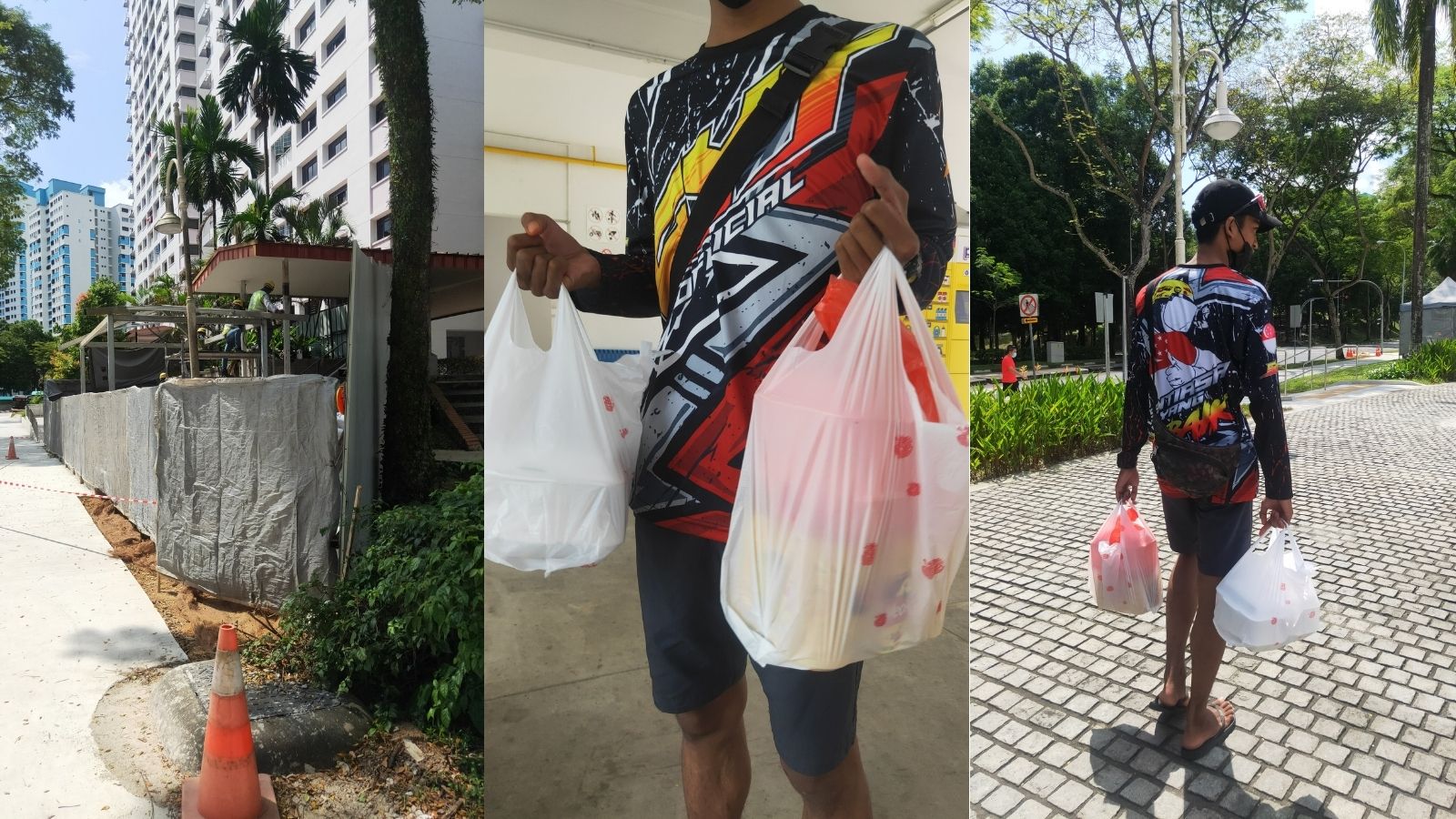

At the end of the day, says Kevin, these migrant workers are very much like us — they work for the future, and they work for their loved ones.
He says: “They live simple lives here and spend very little. I asked if they missed their families, and they said yes, especially those with young kids.”
“But they accept it as part of the job.”
If you like what you read, follow us on Twitter and Google News to get the latest updates.

